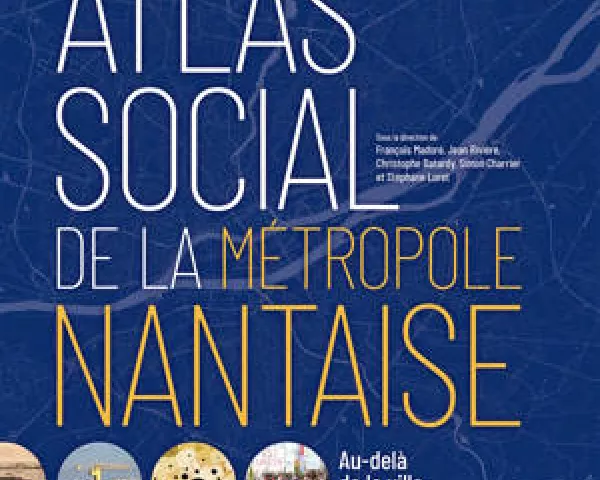L’étude consiste à définir les unités phytosociologiques dans lesquelles se rangent les formations végétales du djebel Medjounes, de suivre leur dynamique, de déterminer les conditions climatiques et édaphiques dans lesquelles elles se développent. La méthodologie utilisée est dite « phytosociologique » ou « sigmatiste ». Celle-ci a permis l’individualisation de treize associations et trois sous associations appartenant à 4 classes 6 ordres et 10 alliances. Classe des Quercetea ilicis est représentée par cinq associations, affiliée à l’ordre des Quercetalia ilicis, et incorporée dans une seule alliance les Quercion ilicis, l’association des Pistacio- Quercetum ilicis Brullo, Martino & Marceno 1985 et quatre associations ; Calicotomo spinosae-Quercetum rotundifoliae Dahmani-Megrerouche & Loisel ex Meddour, Meddour Sahar, Zeraia & Mucina, (2017), Genisto tricuspidatae-Calicotometum spinosi ass, nova Meddour, (2010), Calicotome spinosae-Thymuteum ciliatus nouv, Rhamnus alaternus Boulaacheb et al, (2005) intégrées à l’ordre des Pistacio-Rhamnetalia et l’alliance des Genisto tricuspidatae- Calicotomion spinosi ; Classe des Rosmarinetea officinalis avec trois associations, l’association des Bupleuro spinosi- Astragaletum amartus (Quézel, 1975) appartenant à l’ordre des Erinaceetalia anthyllidis et à l’alliance des Festusion algeriensis, réunit les groupements à xérophytes épineux et les pelouses des étages montagnard-méditerranéen et supra-méditerranéens. Deux associations ; Centaureo acaulis - Genistetum tricuspidata nov et Helianthemo cinereum subsp. rotundifolium - Genistetum tricuspidata nouv sont affiliées à l’ordre des Cisto mauritanici-Thymetalia munbyani et l’alliance des Genisto atlanticae- cistion villosi ; Classe des Lygeo-stipetea comportent quatre associations intégrées dans l’ordre des Lygeo-stipetalia. L’association des Plantago coronopus et Helianthemum apenninum nov. appartenant à l’alliance des Stipo-Launaeion acanthocladae ; l’association des Artemisietum herba- albae Maire, (1926) affiliée à l’alliance des Noaeo mucronatae-Artemision herba-albae ; l’association des Plantago lagopus L. et Pseudopodospermum undulatum (Vahl) Zaika, Sukhor. & Kilian, nov se range dans l’alliance Artemisia herba-alba et Plantago lagopus ; l’association des Artemisia herba-alba Asso et Launaea lanifera Pau, nov intégrée dans l’alliance Artemisia herba-alba et Poa bulbosa ; Classe des Tuberarietea guttatae avec une seule association des Filago pyramidatae-Plantaginetum lagopi (nov. ass) observée par Dahmani (1997) appartenant à l’ordre des Brachypodietalia (Trachynietalia) distachyae et à l’alliance des Thero-Brachypodion.Sur la base de 237 relevés phytosociologiques, nous avons recensé 420 taxa appartenant à 53 familles et 226 genres. La flore se compose de 186 thérophytes (45.03 %), 133 hémicryptophytes (32.20 %.), 33 géophytes (8 %), 40 chaméphytes (9.68 %), 22 nanophanérophytes, soit 5.30 % du cortège floristique. Sur le plan phytogéographique, l'élément méditerranéen est relativement prépondérant avec 183 espèces (45 %). On note la présence de quarante espèces endémiques soit 9.82 %.Les formations végétales étudiées (matorrals, garrigues, pelouses et steppes) sont principalement déterminées par des facteurs climatiques (précipitations, températures). D'après notre analyse, nous avons constaté une forte dégradation ainsi qu'une dynamique régressive importante. Pour établir une carte phytosociologique, nous avons utilisé des images satellites LandSAT datant de 1989, 2000, 2009 et 2020, ainsi que des données issues d'un modèle numérique de terrain (MNT) pour créer des cartes géomorphologiques, hypsométriques des pentes et d'exposition. Pour évaluer l'impact de la sécheresse (SPEI) sur la couverture végétale entre 1989 et 2020, nous avons combiné le NDVI et le NDWI de Gao...
The study aims to define the phytosociological units in which the vegetation formations of Djebel Medjounes are grouped, to monitor their dynamics, and to determine the climatic and edaphic conditions in which they develop. The methodology used is called "phytosociological" or "sigmatist".The methodology allowed for the individualization of thirteen associations and three sub-associations belonging to 4 classes, 6 orders, and 10 alliances. The Quercetea ilicis class is represented by five associations affiliated with the Quercetalia ilicis order, and incorporated into a single alliance, the Quercion ilicis. The association of Pistacio- Quercetum ilicis Brullo, Martino & Marceno 1985, and four other associations (Calicotomo spinosae-Quercetum rotundifoliae Dahmani-Megrerouche & Loisel ex Meddour, Meddour Sahar, Zeraia & Mucina, (2017), Genisto tricuspidatae-Calicotometum spinosi ass, nova Meddour, (2010), Calicotome spinosae-Thymuteum ciliatus nouv, Rhamnus alaternus Boulaacheb et al, (2005)) are integrated into the Pistacio-Rhamnetalia order and the alliance of Genisto tricuspidatae- Calicotomion spinosi;The Rosmarinetea officinalis class has three associations, the Bupleuro spinosi-Astragaletum amartus (Quézel, 1975) association belonging to the order of Erinaceetalia anthyllidis and the alliance of Festusion algeriensis, bringing together xerophytic spiny groups and mountain-Mediterranean and supra-Mediterranean meadows. Two associations; Centaureo acaulis - Genistetum tricuspidata nov and Helianthemo cinereum subsp. rotundifolium - Genistetum tricuspidata nouv are affiliated with the order of Cisto mauritanici-Thymetalia munbyani and the alliance of Genisto atlanticae-cistion villosi; the Lygeo-stipetea class includes four associations integrated into the order of Lygeo-stipetalia.The association of Plantago coronopus and Helianthemum apenninum belonging to the alliance of Stipo-Launaeion acanthocladae; the association of Artemisietum herba-albae Maire, (1926) affiliated with the alliance of Noaeo mucronatae-Artemision herba-albae; the association of Plantago lagopus L. and Pseudopodospermum undulatum (Vahl) Zaika, Sukhor. & Kilian, ranges in the alliance of Artemisia herba-alba and Plantago lagopus; the association of Artemisia herba-alba Asso and Launaea lanifera Pau, integrated into the alliance of Artemisia herba-alba and Poa bulbosa; Class of Tuberarietea guttatae with a single association of Filago pyramidatae-Plantaginetum lagopi (nov. ass) observed by Dahmani (1997), belonging to the order of Brachypodietalia (Trachynietalia) distachyae and the alliance of Thero-Brachypodion.Based on 237 phytosociological surveys, we recorded 420 taxa belonging to 53 families and 226 genera. The flora consists of 186 therophytes (45.03%), 133 hemicryptophytes (32.20%), 33 geophytes (8%), 40 chamaephytes (9.68%), and 22 nanophanerophytes, which make up 5.30% of the floristic assemblage. From a phytogeographic standpoint, the Mediterranean element is relatively dominant with 183 species (45%). There were forty endemic species present, accounting for 9.82%.The studied vegetation formations (scrublands, heathlands, grasslands, and steppes) are mainly determined by climatic factors (precipitation, temperature). Based on our analysis, we observed significant degradation and substantial regressive dynamics. To establish a phytosociological map, we used Landsat satellite images from 1989, 2000, 2009, and 2020, as well as data from a digital terrain model (DTM) to create geomorphological, hypsometric, slope, and exposure maps. To assess the impact of drought (SPEI) on vegetation cover between 1989 and 2020, we combined NDVI and NDWI-Gao. Our method for detecting changes in vegetation cover consists of comparing the distributions of NDWI and NDVI values for each year in different phytosociological associations. Environmental factors, particularly climatic factors, play a crucial role in the development and distribution of species.









